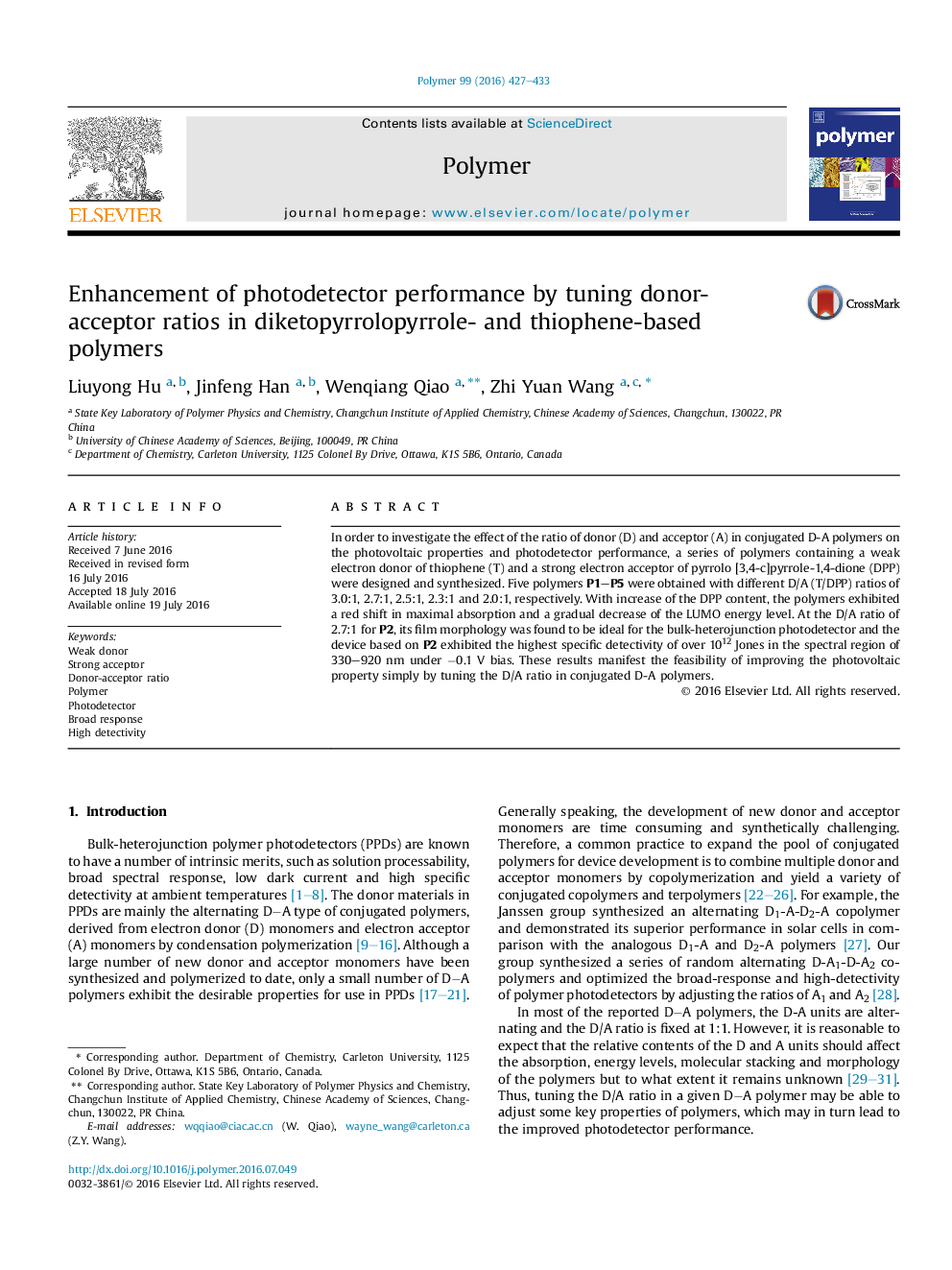| Article ID | Journal | Published Year | Pages | File Type |
|---|---|---|---|---|
| 5179016 | Polymer | 2016 | 7 Pages |
â¢This work reveals subtle change of D/A ratio in polymer allows for fine tuning of properties to improve device performance.â¢A series of D-A polymers having different D/A ratios were prepared and studied in detail for influence of D/A ratios.â¢The photodetector based on P2 with D/A of 2.7:1 was found to exhibit the best detectivity of over 1012 Jones at 330-920 nm.
In order to investigate the effect of the ratio of donor (D) and acceptor (A) in conjugated D-A polymers on the photovoltaic properties and photodetector performance, a series of polymers containing a weak electron donor of thiophene (T) and a strong electron acceptor of pyrrolo [3,4-c]pyrrole-1,4-dione (DPP) were designed and synthesized. Five polymers P1-P5 were obtained with different D/A (T/DPP) ratios of 3.0:1, 2.7:1, 2.5:1, 2.3:1 and 2.0:1, respectively. With increase of the DPP content, the polymers exhibited a red shift in maximal absorption and a gradual decrease of the LUMO energy level. At the D/A ratio of 2.7:1 for P2, its film morphology was found to be ideal for the bulk-heterojunction photodetector and the device based on P2 exhibited the highest specific detectivity of over 1012 Jones in the spectral region of 330-920 nm under â0.1 V bias. These results manifest the feasibility of improving the photovoltaic property simply by tuning the D/A ratio in conjugated D-A polymers.
Graphical abstractDownload high-res image (197KB)Download full-size image
